Wages in Oklahoma, which shrank during the oil downturn of 2015-16, have been growing faster in 2017 than the nation overall. This growth has occurred even as the state has continued to lag the nation in overall job growth. There appears to be two key contributors to this faster growth in average hourly earnings: stronger job gains in Oklahoma’s higher-paying industries than in its lower-paying ones and a bigger decline in state unemployment rates than in the nation.
Higher wage growth despite slower job growth
Oklahoma wage growth in February, March and April averaged 3.8 percent on a year-over-year basis, nearly a full percentage point more than national wage growth (Chart 1).
Chart 1. Wage Growth (Average Hourly Earnings)
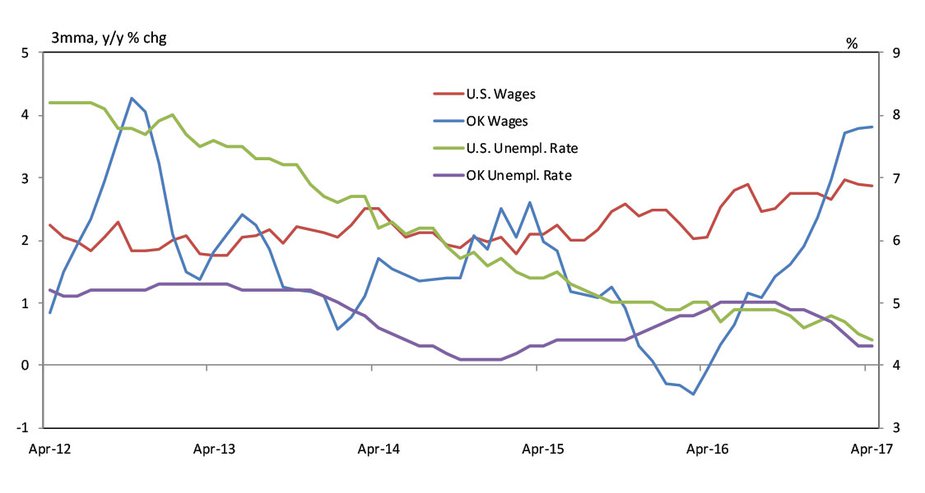
Source: BLS
This followed two years of gains in average hourly earnings that were considerably less than the national average. Oklahoma’s average wages actually declined for several months when layoffs in the oil and gas sector were most acute. This recent spurt in wage growth has begun to narrow a sizable gap in average wages between the state and nation (Chart 2).
Chart 2. Average Hourly Earnings, sa
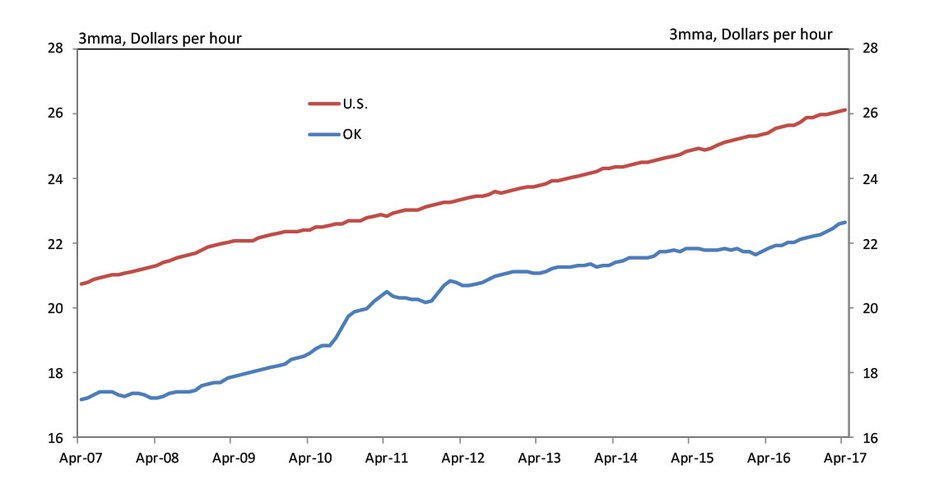
Source: BLS
The recent stronger growth of wages in the state has occurred even as overall job growth has continued to lag the nation (Chart 3).
Chart 3. Nonfarm Payroll Employment
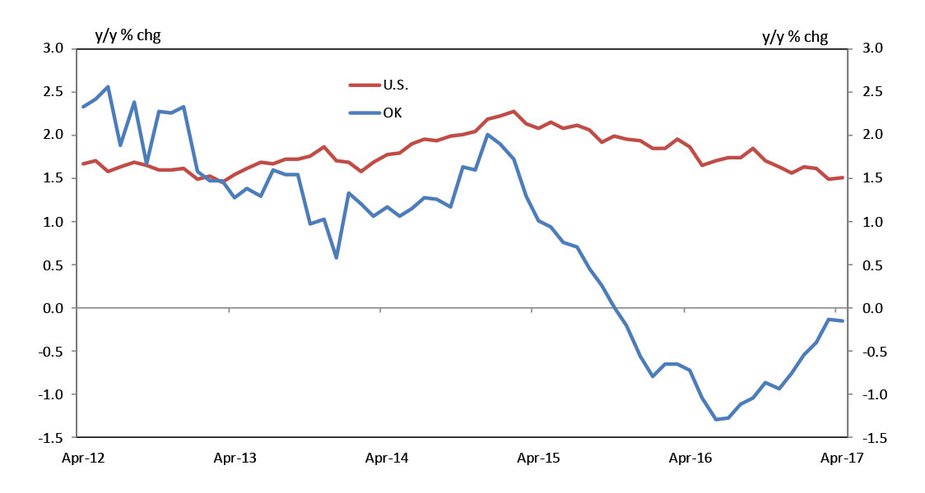
Source: BLS
Oklahoma industries that have added jobs over the past year, however, are among the highest-paying sectors—including goods-producing industries such as energy and manufacturing, as well as services industries like finance and health care (Chart 4).
Chart 4. Oklahoma Employment Growth by Industry, April 2017
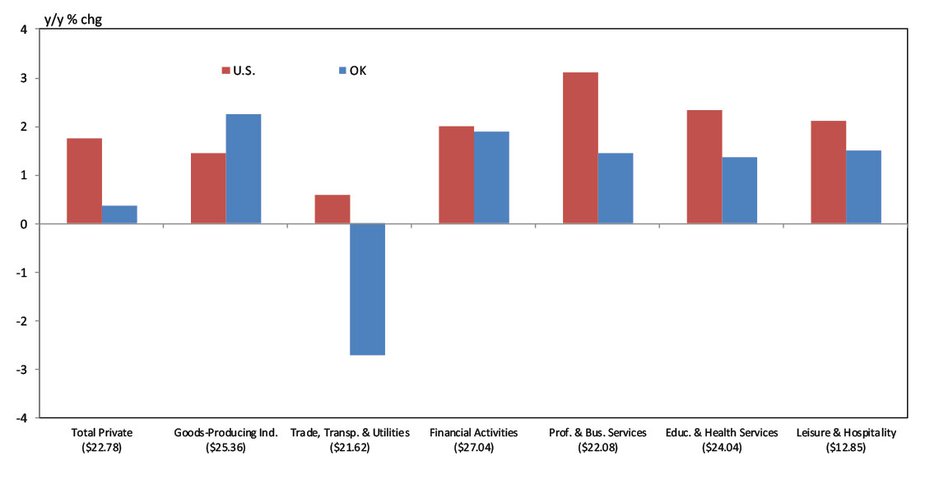
Note: Oklahoma average hourly earnings in parenthesis
Source: BLS
At the same time, the lowest-paying industries, including trade, transportation and utilities (the biggest component of which is retail trade), as well as leisure and hospitality, have shed jobs even as those sectors have continued to grow nationally. Thus the pure mix of jobs in Oklahoma’s economy recently has shifted to a more higher-paying one.
In addition to faster job growth in Oklahoma’s higher-paying industries, wages within some of those industries also have grown faster than in the same industry nationwide. Wages likewise are growing at a solid pace in most other industries in the state—both high- and low-paying. In particular, wage growth in goods-producing industries and financial activities, along with trade, transportation and utilities, has outpaced national wage growth this year (Chart 5).
Chart 5. Average Hourly Wage Growth by Industry, April 2017
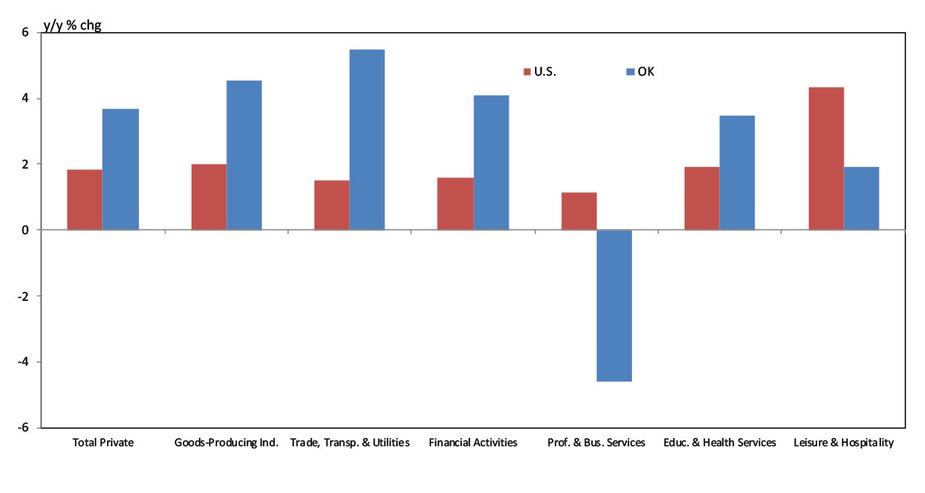
Source: BLS
Moreover, wage growth in education and health services as well as in leisure and hospitality has only slightly lagged wage growth nationally.
A potential reason for this relatively broad strong growth in Oklahoma is that firms in general are having a harder time finding workers in Oklahoma and are having to increase pay to attract or retain workers. This is consistent with recent trends in unemployment rates. The unemployment rate in Oklahoma has slipped below the national rate after rising slightly above it for most of 2016, so the decline in joblessness in the state has been bigger than in the nation in 2017 (Chart 6).
Chart 6. Official Unemployment Rates (U-3)*
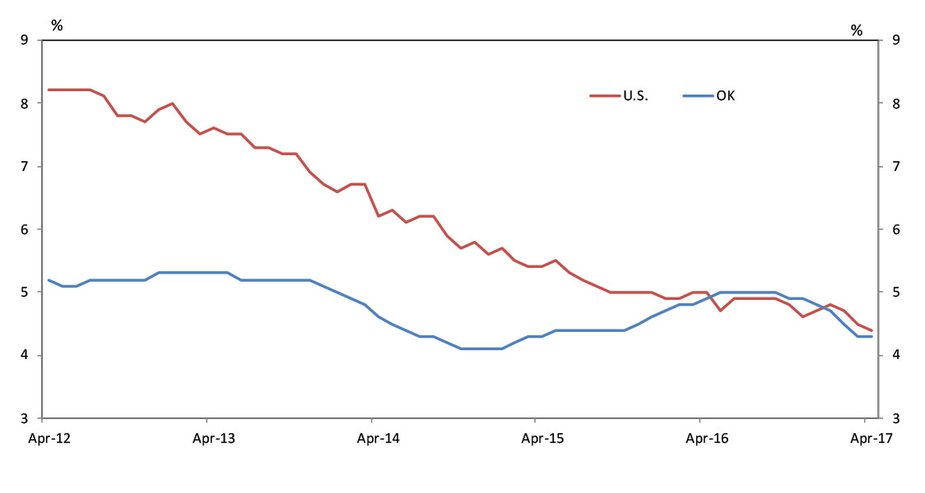
*Unemployed workers actively looking for work within the past four weeks
Source: BLS
An alternative, broader measure of unemployment in the state, which accounts for people who have stopped looking for work or are working part time but desire full-time work, also has remained lower in Oklahoma than in the nation (Chart 7).
Chart 7. Alternative Measure of Unemployment (U-6)*
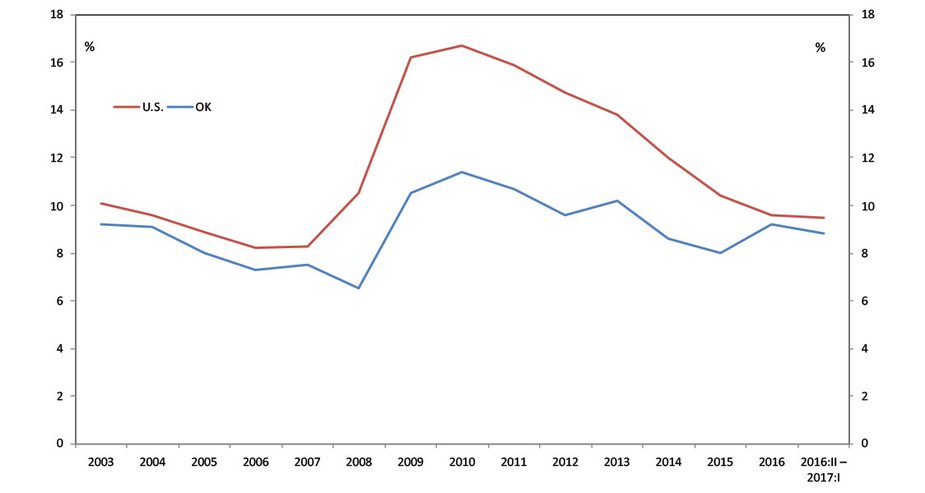
*Unemployed workers, including discouraged workers, marginally attached workers and those employed part-time for economic reasons
Source: BLS
As such, the pool of available workers appears to be smaller in the state, thus potentially providing more upward pressure on wages.
In sum, the recent faster growth in Oklahoma wages appears to be driven by relatively stronger growth in higher-paying jobs, along with a bigger drop in unemployment compared with the country as a whole. This has begun to once again reduce the gap in average wages between the state and nation, although a large gap remains.
